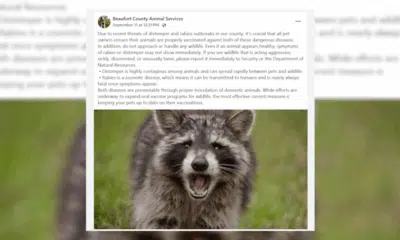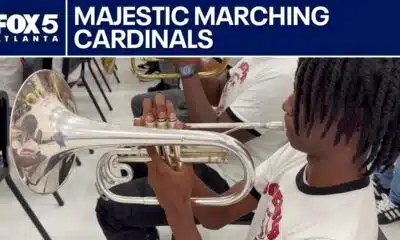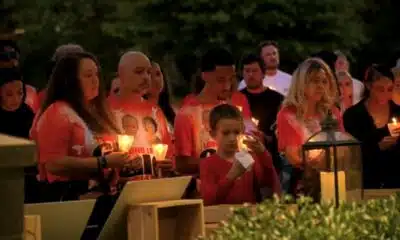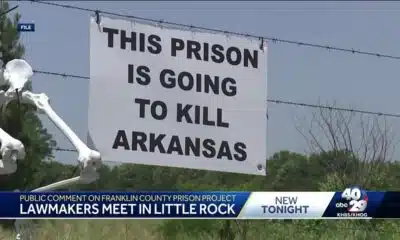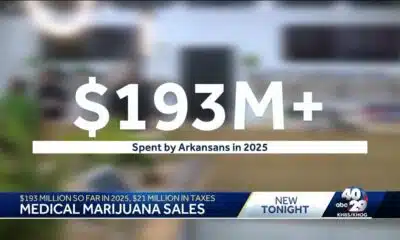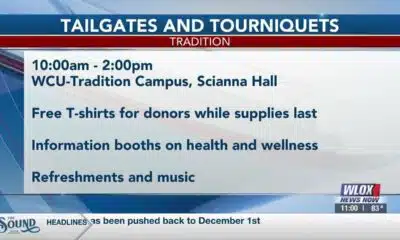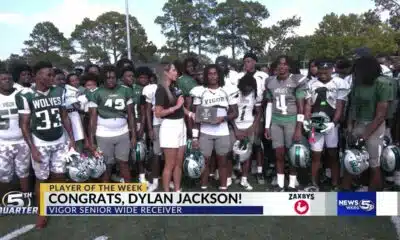News from the South - Virginia News Feed
Indigenous Peoples Day removed, then re-added, to board-approved Va. education standards
Indigenous Peoples Day removed, then re-added, to board-approved Va. education standards
by Nathaniel Cline, Virginia Mercury
March 21, 2025
Groups of Virginia education leaders want answers about why Indigenous Peoples’ Day was removed from state standards dictating what students should learn about American history since the Board of Education adopted the revised standards two years ago.
While the holiday was omitted during the revision process, it was put back in before the final adoption of the standards in 2023. This week, some education leaders noticed that Indigenous Peoples Day was missing in the online versions of the standards for the state’s youngest schoolchildren.
“What else is in the standards (that) has been changed or removed?” asked Chris Jones, executive director for the Virginia Association for Teaching, Learning and Leading (VATLL), an education advocacy group. He said the holiday’s removal has led leaders to suspect changes could have also been made to the instructional guides meant to help teachers implement the history standards into their lessons, which could be the reason some of the guides have still not been released, after a two-year delay.
“But because we don’t know, and nothing is really being communicated publicly, we’re of course left to make assumptions,” Jones said.
Indigenous Peoples Day’s addition and subtraction
Some educators and advocates noticed the holiday was missing recently by comparing the history and social science standards approved by the Board of Education two years ago to the online versions for Kindergarten, 1st, and 2nd-grade history courses.
Missing context, political bias: Some of critics’ objections to Virginia’s new history standards
In each of the three grade levels, the standards state that students would be required to apply history and social science skills to explain how communities honor state and national traditions and recognize designated Virginia holidays, including, “Columbus Day (also known as Indigenous Peoples’ Day).”
However, the online versions excluded the mention of Indigenous Peoples Day, which was made a state holiday in 2019, to recognize the histories and cultures of Indigenous people. It’s also an alternative to Columbus Day, named after the 15th century explorer of the Americas who paved the way for the colonization and decimation of Indigenous communities.
The holiday was also removed from the standards during the process before the board placed it back in.
A VDOE spokesperson confirmed Thursday afternoon, after the agency was contacted about the holiday missing from the online versions of some standards, that the “oversight” has been corrected.
“[The department] has reviewed the footage of the Board of Education work session discussion on April 19, 2023 and Board approval of Item G on April 20, 2023 and it seems to have been an oversight by the Department to not include “Indigenous People’s Day” as a parenthetical notation next to Columbus Day,” the spokesperson wrote to the Mercury. “To align with board action, we have made the correction which is now reflected online throughout the 2023 history SOL documents.”
Still, some education advocates view the change as a “violation” of the public input process to revise the state’s history and social science standards, which set student learning expectations and are assessed through Standards of Learning tests. State law requires the standards be reviewed every seven years.
The initial omission of the Indigenous Peoples Day perplexed some educators.
“It’s interesting because all of us felt like we remembered seeing, ‘also known as Indigenous Peoples’ Day’ in there, and it being a significant part of the discussion, and so when they came out, there was a little bit of confusion,” said Danyael Graham, president of the Virginia Social Studies Leaders Consortium.
Long-delayed instructional guides prompt more concerns
Graham said the organization, made up of history educators, is also concerned about the lack of direction for implementing the standards, especially for smaller districts going through textbook adoptions, and the delay of providing instructional guides for teachers.
Instructional guides, according to the education department, provide educators guidance on implementing the recently adopted 2023 History and Social Science Standards of Learning and transition away from the 2015 history standards, the most recent version before the 2023 update.
Jones wrote a letter on Feb. 13 to the Board of Education on behalf of VATLL’s policy team requesting the release of the instructional guides.
He wrote that if schools do not perform adequately on the SOL test next year, the department’s “dereliction of duty, and not the work of Virginia’s teachers, will be the key source of underperformance.”
In response, Lisa Coons, then-superintendent of public instruction, notified Jones that several guides have already been published: Grade 5 United States History to 1865, Grade 6 United States History: 1865 to the present, Grade 7 Civics and Economics and Grade 12 Virginia and United States Government.
Coons wrote that the remaining history instructional guides have been undergoing “copy edits” and were planned to be released the week of February 24.
However, as of Wednesday afternoon, the agency had not published all of the remaining guidelines.
Coons also resigned on March 19, with questions remaining about her decision. Emily Anne Gullickson, former chief deputy secretary of education, replaced Coons as the acting state superintendent.
Jones said Coons’ resignation “absolutely” elevated the concern that the guidelines will be even further delayed.
“Right now, there’s a lot going on behind the scenes that the people should know,” Jones said. “We’ve started pulling at the thread with the instructional guides, but this idea of removing something from the standards, I think that’s ‘wow.’”
On Friday, more than a dozen educational organizations — including the Virginia Social Studies Leaders Consortium, Virginia Association of Colleges and Teacher Educators and VATLL — plan to submit a letter to the Virginia Board of Education requesting an implementation delay of the 2023 revised History and Social Science Standards of Learning for one year.
A VDOE spokesperson said producing high-quality history instructional guides for teachers is a “top priority” and agency staff will be providing an update to the Board of Education at its work session on March 26, which will include a release timeline.
The spokesperson added that the department has been reviewing the instructional guides and all corresponding linked resources to ensure compliance with recent federal executive actions.
GET THE MORNING HEADLINES.
Virginia Mercury is part of States Newsroom, a nonprofit news network supported by grants and a coalition of donors as a 501c(3) public charity. Virginia Mercury maintains editorial independence. Contact Editor Samantha Willis for questions: info@virginiamercury.com.
The post Indigenous Peoples Day removed, then re-added, to board-approved Va. education standards appeared first on virginiamercury.com
News from the South - Virginia News Feed
Some employers take action against employees for social media comments on Charlie Kirk's death
SUMMARY: Following Charlie Kirk’s death, some Virginia employers have taken action against employees who made controversial social media comments. In healthcare and education sectors, individuals were placed on leave or terminated for remarks deemed unprofessional or supportive of violence. Riverside Walter Reed Hospital fired an anesthesiologist, and Newport News and Accomack County schools disciplined staff members. Experts highlight the blurred line between personal expression and professional conduct due to social media’s reach. William and Mary law professor Margaret Hugh emphasized that employment laws and at-will policies allow employers broad authority to act. She urges unity and respect amid heightened tensions.
Some Virginia employers are taking action against employees for social media comments made regarding Charlie Kirk’s death. A legal expert weighed in on where the line is drawn.
Subscribe: https://www.youtube.com/user/wvectv/?sub_confirmation=1
Download the 13News Now app: https://bit.ly/13NewsNowApp
Watch 13News Now+ for free on streaming: https://www.13newsnow.com/13NewsNowPlus
Check out our website: https://www.13newsnow.com/
Like us on Facebook: https://www.facebook.com/13newsnow/
Follow us on X/Twitter: https://x.com/13newsnow
Follow us on Instagram: https://www.instagram.com/13newsnow/
News from the South - Virginia News Feed
Area of interest forms in the Atlantic
SUMMARY: On September 11, 2025, Chief Meteorologist Tim Pandages reported on Hurricane Hub Live about tropical developments in the Atlantic and eastern Pacific. In the Atlantic, a low-chance area of interest near the Cabo Verde Islands may become Tropical Storm Gabrielle but requires favorable conditions. Recent tropical waves have struggled due to stable atmospheric conditions. Models show possible development east of the Leeward Islands with a likely recurving path away from Bermuda. In the eastern Pacific, Tropical Depression 13E has formed, expected to become Hurricane Mario, the season’s 8th hurricane. The Atlantic has had only one hurricane so far, Major Hurricane Aaron. Activity is expected to increase into October.
The newly formed area of interest could become Invest 92-L off the coast of Africa. Find out about that and more during tonight’s episode of Hurricane Hub LIVE! Livestream from Thursday, September 11, 2025.
Subscribe: https://www.youtube.com/user/wvectv/?sub_confirmation=1
Download the 13News Now app: https://bit.ly/13NewsNowApp
Watch 13News Now+ for free on streaming: https://www.13newsnow.com/13NewsNowPlus
Check out our website: https://www.13newsnow.com/
Like us on Facebook: https://www.facebook.com/13newsnow/
Follow us on X/Twitter: https://x.com/13newsnow
Follow us on Instagram: https://www.instagram.com/13newsnow/
News from the South - Virginia News Feed
Cat cafes, chromotherapy and pumpkin delivery: Here’s what’s new in RVA this September
SUMMARY: This September in RVA, Patch to Porch RVA delivers handpicked pumpkins from local farms, offering design, setup, and cleanup services for homes and events in Richmond, Henrico, and Chesterfield. Shore Pump introduces Beam Light Sauna, featuring infrared sauna and chromotherapy, promoting detox, skin renewal, and wellness with customizable sessions and memberships. The Fan now hosts River City’s first cat café, The Perfect Bean, combining a coffee bar with an adoptable cat lounge upstairs. Sourced locally, their drinks include seasonal, cat-themed specials. Cats come from Purring Hearts VA rescue, offering adoption opportunities, fostering community engagement and animal welfare.
What’s New in RVA is dedicated to informing you about the latest happenings in the Richmond area.
-
News from the South - Arkansas News Feed7 days ago
Group in lawsuit say Franklin county prison land was bought before it was inspected
-
News from the South - Kentucky News Feed6 days ago
Lexington man accused of carjacking, firing gun during police chase faces federal firearm charge
-
The Center Square6 days ago
California mother says daughter killed herself after being transitioned by school | California
-
News from the South - Arkansas News Feed6 days ago
Arkansas medical marijuana sales on pace for record year
-
Local News Video6 days ago
William Carey University holds 'tailgates and tourniquets' blood drive
-
News from the South - Alabama News Feed6 days ago
Zaxby's Player of the Week: Dylan Jackson, Vigor WR
-
News from the South - Missouri News Feed6 days ago
Local, statewide officials react to Charlie Kirk death after shooting in Utah
-
Local News6 days ago
US stocks inch to more records as inflation slows and Oracle soars









